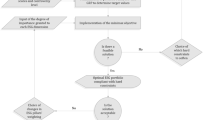Abstract
This paper conduct a quantitative experiment to assess the effectiveness of a hybrid perturbation-projection (HPP) method to solve dynamic stochastic general equilibrium (DSGE) asset pricing models. We employ a macro-based asset pricing model to compare HPP method and value function iteration (VFI) method based on the same reasonable calibrations. This DSGE asset pricing model in the paper incorporates nonlinearities in both household preferences and firm production technologies. Additionally, the market for debt introduces its own type of nonlinearity; leverage can force a nonlinear wedge between asset rates. In the paper, we first show how to apply the HPP method and then assess its accuracy and speed compared with the old VFI method. Accuracy of solutions is demonstrated by comparing standard deviations of the logged values of first order conditions errors of important financial assets. Speed of the solution methods is shown by comparing the computational time. By comparing the results from applying the same DSGE asset pricing model to the competing methods, we find that the HPP method is not only feasible but also robust to the extreme nonlinearities in the asset pricing model.



Similar content being viewed by others
Notes
In a dynamic model, f(x) is typically the solution for the next period x (i.e., \(x_{t+1}=f(x_{t})\)).
References
Abel, A. B. (1980). Empirical investment equations: An intergrative framework. Carnegie-rochester conference series on public policy (vol. 12, pp. 39–91).
Barberis, N., Huang, M., & Santos, T. (2001). Prospect theory and asset prices. The Quarterly Journal of Economics, 116, 1–53.
Barberis, N., & Huang, M. (2004). Preferences with frames: A new utility specification that allows for the framing of iisks, Working paper, Yale University.
Barberis, N., & Huang, M. (2008). The handbook of the equity risk premium, the loss aversion/narrow framing approach to the equity premium puzzle (pp. 1–36). Amsterdam: Elsevier.
Basu, P. (1987). An adjustment cost model of asset pricing. International Economic Review, 28, 609–621.
Boldrin, M., Christiano, L., & Fisher, J. (2001). Habit persistence, asset returns, and the business cycle. American Economic Review, 91, 149–166.
Caldara, D., Fernández-Villaverde, J., Rubio-Ramirez, J., & Yao, W. (2012). Computing DSGE models with recursive preferences and stochastic volatility. Review of Economic Dynamics, 15, 188–206. doi:10.1016/j.red.2011.10.001.
Chen, Y. (2013). A prior predictive analysis of the effects of loss aversion/narrow framing in a macroeconomic model for asset pricing. B.E. Journals of Macroeconomics, 13(1), 1–27.
Danthine, J., & Donaldson, J. (2002). Labor relations and asset returns. The Review of Economic Studies, 69, 41–64.
Fernández-Villaverde, J., & Rubio-Ramirez, J. (2006). Solving DSGE models with perturbation methods and a change of variables. Journal of Economic Dynamic and Control, 30, 2509–2531.
Fernández-Villaverde, J., Binsbergen, J. V., Koijen, R. S. J., & Rubio-Ramirez, J. (2010). The term structure of interest rates in a DSGE model with recursive preferences, Working Paper 1–49.
Grüne, L., & Semmler, W. (2008). Asset pricing with loss aversion. Journal of Economic Dynamics & Control, 32, 3253–3274.
Guvenen, F. (2009). A parsimonious macroeconomic model for asset pricing. Econometrica, 77, 1711–1750.
Huffman, G. W., & Wynne, M. A. (1999). The role of intratemporal adjustment costs in a multisector economy. Journal of Monetary Economics, 43, 317–350.
Jermann, U. (1998). Asset pricing in production economies. Journal of Monetary Economics, 41, 257–275.
Judd, K. L. (1996). Approximation, perturbation, and projection solution methods in economics, handbook of computational economics (pp. 509–585). Amsterdam: Elsevier.
Judd, K.L. (2002). Perturbation methods with nonlinear changes of variables, Working paper, Hoover Institution, Stanford University.
Kydland, F. E., & Prescott, E. C. (1982). Time to build and aggregate flutuations. Econometrica, 50, 1345–1370.
Mehra, R., & Prescott, E. (1985). The equity premium. Journal of Monetary Economics, 15, 145–161.
Ruge-Murcia, F. (2012). Estimating nonlinear DSGE models by the simulated method of moments: With an application to business cycles. Journal of Economic Dynamics and Control, 36, 914–938.
Tauchen, G. (1990). Solving the stochastic growth model by using quadrature methods and value-function iterations. Journal of Business and Economic Statistics, 8(1), 49–51.
Acknowledgments
We are grateful to Duane Graddy and Kevin Zhao for helpful comments and suggestions.
Author information
Authors and Affiliations
Corresponding author
Rights and permissions
About this article
Cite this article
Chen, Y., Fowler, S. Hybrid Perturbation-Projection Method for Solving DSGE Asset Pricing Models. Comput Econ 48, 649–667 (2016). https://doi.org/10.1007/s10614-015-9529-0
Accepted:
Published:
Issue Date:
DOI: https://doi.org/10.1007/s10614-015-9529-0



